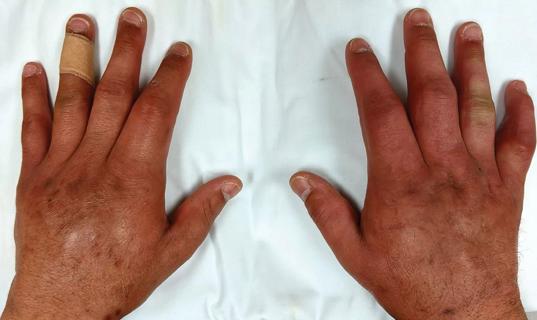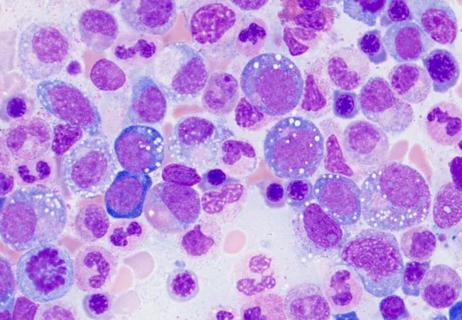Coordinating care across multiple disciplines

Advertisement
Cleveland Clinic is a non-profit academic medical center. Advertising on our site helps support our mission. We do not endorse non-Cleveland Clinic products or services. Policy
Niccolò Paganini (1782-1840) was a violinist who played with such speed, bravado and dexterity that he earned the moniker “the devil’s violinist,” and some even consider him to be the first rock star. Paganini was tall, lanky and often performed in a black suit, giving him a sinister appearance. He could contort his hands and fingers in ways that seemed impossible, stretching his fingers across the violin, jumping between notes rapidly, in ways that no one had seen before. Although his inherent flexibility allowed him to appear supernaturally talented at the violin, his flexibility came with a cost as he developed crippling joint pain at an early age, making it more difficult to practice and play to an audience.
We will never know with certainty, but based on observations of the violinist, he likely had Ehlers-Danlos syndrome (EDS). EDS is a heterogeneous group of connective tissue disorders leading to abnormal collagen synthesis affecting skin, ligaments, joints and sometimes blood vessels. Multiple types of EDS exist, including some with known genetic mutations that can be tested, but most patients do not have a known genetic abnormality despite clear familial inheritance.
As we saw with Paganini, the laxity of the joints caused by EDS leads to premature wear and tear of the joints, often resulting in joint pain at an early age. Joint pain is a common feature in patients with EDS. Sometimes the cause is clearly osteoarthritis, but most of the time the pathology of the pain is not completely understood. Patients with EDS often suffer from multiple joint dislocations, resulting in premature osteoarthritis often requiring repeated surgeries. EDS patients can suffer for years or even decades with body aches without knowing the cause.
Advertisement
Multiple medical complications can arise in patients with EDS. Joint pain is the most common, but more life-threatening complications are possible. The collagen synthesis abnormalities can result in cardiac valvular abnormalities, autonomic instability leading to postural orthostatic tachycardia syndrome (POTS), skin abnormalities leading to excessive tearing and bleeding, vascular abnormalities leading to aneurysm formation and rupture leading to hemorrhage and potential death.
Depending on the major presenting problem for the patient, specialties like vascular medicine or surgery may take care of the patient, but the majority of patients with joint laxity do not have a medical home. The goal of Cleveland Clinic’s EDS coordinated care program is to provide that medical home for patients with EDS. Our team evaluates the patient and assesses their needs. We help with joint pain, setting up physical therapy as well as help with joint preservation strategies like ankle orthotics to prevent recurrence. We help coordinate care with orthopaedic surgery, cardiology, neurology for POTS evaluation and vascular medicine if needed.
Paganini likely never knew why he suffered from crippling joint pain at a young age. We now know a great deal about the various types of EDS, but there is still much to learn. One of the most important advances we have made is recognition. A diagnosis of EDS, after years of mysterious symptoms, can have a profound impact on a patient’s life as it identifies a medical cause for their physical symptoms and allows clinicians to provide more focused care. As we work toward expanding our knowledge of and therapies for EDS, our coordinated care program provides a central resource and care team for patients whose multisystem symptoms warrant multidisciplinary care.
Advertisement
Dr. Brown is staff in the Department of Rheumatologic and Immunologic Disease.
Advertisement
Advertisement

New clinic meets Hispanic patients where they are

Several factors masked the cause of the patient’s chronic condition

Patient with previous neurological, bone and hematologic involvement presents with hematemesis

A broad differential diagnosis

From methotrexate for RA, to the treatment of HIV and multicenter randomized trials, Cleveland Clinic has long been at the forefront in the field of rheumatology

Study examines the acceptance of PROMs in a large series of rheumatology patients

The identification of a novel disorder: the VEXAS syndrome

Varied platforms maximize opportunities for interactive, problem-based learning